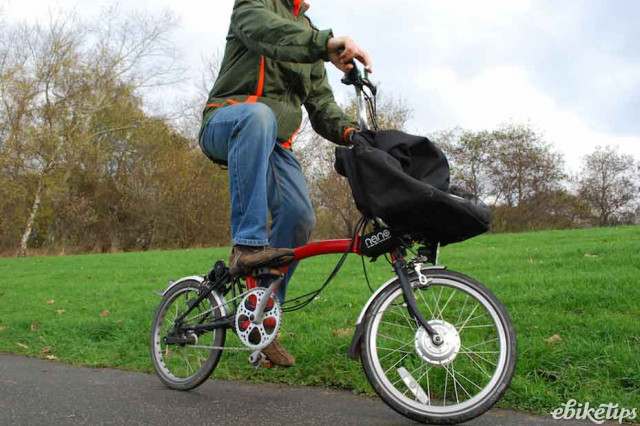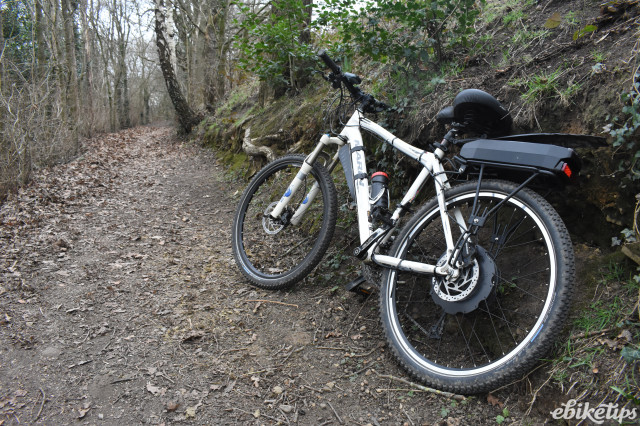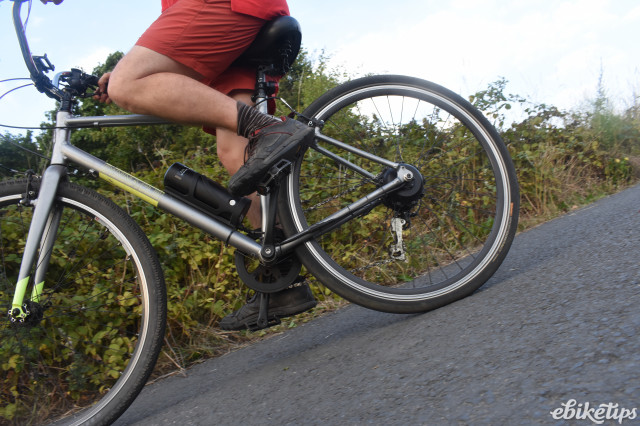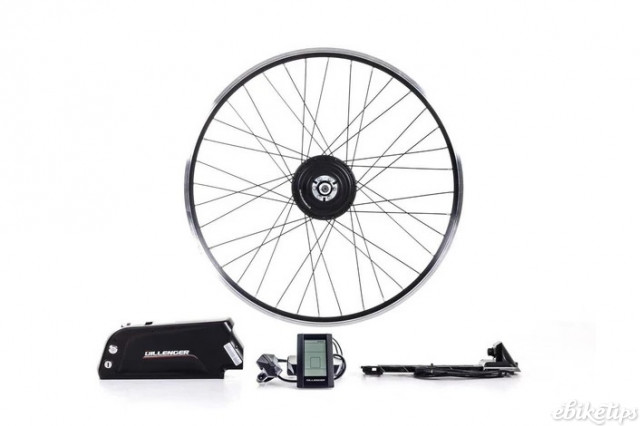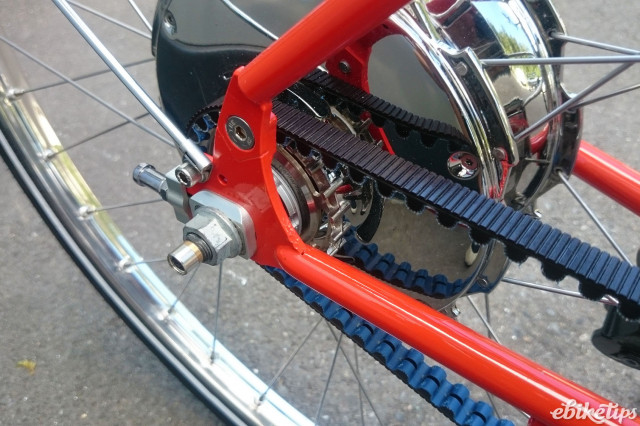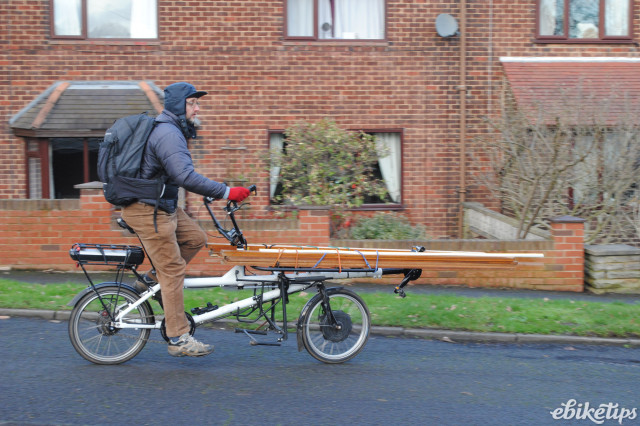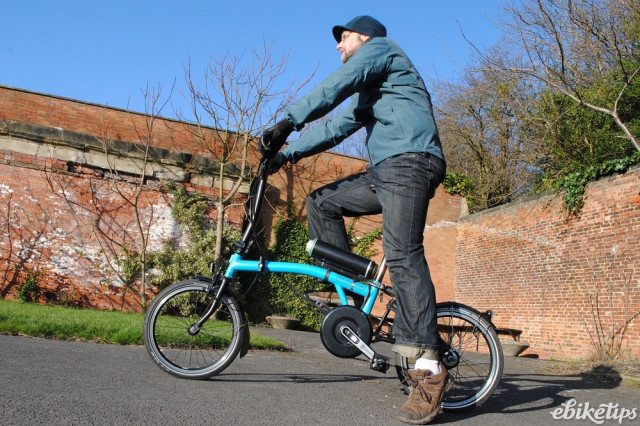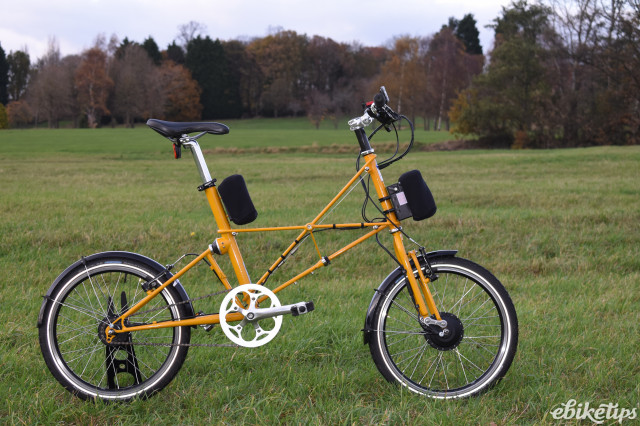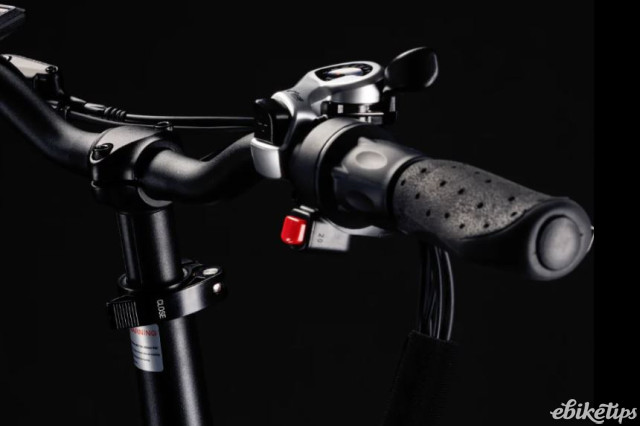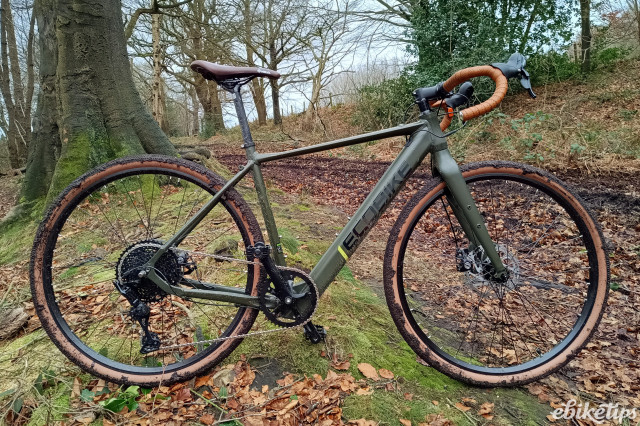E-bike conversion kits are an often overlooked option. If you have a bike ready to fit one, they can certainly be an economical choice. But it's not all about saving money as the best kits can also pack a punch in performance terms. Those options may be pricier, but they can give you something that measures up against the best electric bikes for lower overall cost.
There might be other compelling reasons to think about retrofitting. Your old bike might fit you like a glove or you might just be sentimentally attached to it but feel an electric boost will get you out and about on it more often.
Similarly, if you have a relatively unusual bike, like a recumbent or a trike, then 'off-the-peg' electric options to replace it may be limited which means a conversion kit could be a good way to go.
Are e-bike conversion kits safe though? The short is answer is 'not all of them' and even those that are properly constructed will of course need to be fitted correctly. We've covered this in a bit more detail in the FAQs below.
Best e-bike conversion kits 2024
- Best hub motor kit - Cytronex | Buy for £1,045 from Cytronex
- Best mid-motor kit - CYC Photon | Buy from Electric Bike Conversions from £1548
- Best lightweight kit - Swytch | Buy from £449 from Swytch
- Best kit for Bromptons - Nano | Buy from Nano for £865
- Best kit for hill climbing - Bafang BBS01 | Buy for £799 from Dillenger
- Best value kit - Neodrives | Buy from Ebikeoutlet for £499
- Best of the rest
- FAQs
Best hub motor kit - Cytronex (from £1,045)
The higher price of the Cytronex kit reflects the fact that it is designed from the ground up to produce a lightweight and high tech solution that will feel extremely smooth to ride and which will offer ground-breaking range from the 198Wh battery. Our tests on earlier versions of the kit (here and here) show the British company has largely succeeded.
The Cytronex battery is designed with two independent battery packs inside which means that the original 180Wh battery (as reviewed by us, now updated to 198Wh) can be transported by air (because it is classed as two batteries of up to 100Wh installed in equipment). Other products that have followed suit recently only provide one battery and consequently the capacity is less than half (and the Cytronex battery goes a long way for its size).
Cytronex offer a Mini Charger that will fit in a standard bicycle seat pack that provides an 80% charge in about two hours. At the time of writing they had also just introduced a new micro GaN charger that should even fit in small seat packs, offering a similar charge time.
The front hub motor may look conventional, but a plethora of original design features include a quick release bottle battery, a simple but highly functional handlebar mounted ‘Boost Button’ and a sprocket movement sensor mounted out of the way on the chainstay. The Boost Button has been improved since our review and now offers five power levels which can be changed by pressing left or right.
The unique patented Cytronex sensor senses the sprocket gear teeth, which means that no brake switches or speed sensors are required. The sensor also has a new neat and compact chainstay fixing for 2023.
Other impressive details include a marine-grade stainless steel mounting mechanism and Bluetooth functionality that, via the brand new smartphone/tablet app, lets you not only alter the power of the five motor assistance levels but also monitor the exact charge of the battery even when it is off the bike. This means you can also monitor charging - a very useful feature at a coffee or lunch stop. Diagnostics in the smartphone App allows Cytronex to diagnose an issue from a log sent from anywhere in the world.
At 3.2-3.6kg, depending on spec, it is also one of the lightest retrofit options out there.
In addition to the kit, Cytronex offers complete bikes from the likes of Cannondale and Orbea. There are also Brompton specific options (including one for the superlight all-titanium T-Line) and a tandem option.
Check out our review of the Cytronex e-bike conversion kit and also our review of the Cytronex Brompton e-bike conversion kit as well as the T-Line version
Best mid-motor kit - CYC Photon (from £1,548)
Starting at £1,548 (assuming you install the Photon yourself) this high quality mid-drive offering looks to step ahead of the likes of the Bafang BBSO1 and Tongsin kits in terms of the sophistication and quality it offers.
We liked the smooth torque sensing, light weight (claimed motor weight is 3.3kg but with a punchy 85Nm of torque) and the fact the Photon will fit a wide range of bottom bracket widths, making it suitable for many more bike designs (e.g. some fat bikes). In our test riding, fitted to a Marin El Roy mountain bike, it certainly did what it claimed to do, as we found it compared favourably to Bosch’s more powerful mid-drives.
We also liked the software aspects of the system, with CYC producing a UK compliant version of their kit and the CYC app allowing you to measure motor power versus your own contribution. It even has two temperature readings for the motor and controller so you can monitor that things are working as they should. Self-fitting or bike shop fitting is available but you should be a competent bike mechanic if planning on the former.
Take a look at our review of the CYC Photon kit.
Best lightweight kit - Swytch (from £449)
UK-based Swytch are known for their small and sprightly front hub motor allied with a pedal sensor that fits around the pedal crank, with batteries of varying capacities mounted in differing positions over subsequent iterations. The kit's remarkable success has been due to a combination of an attractive price (the most heavily discounted price means you have to wait a few months to get a 'bulk discount' rate) and a claim of almost 'universal' fitting (it's certainly one of easiest and most widely compatible kits available).
New for 2024 is the Swytch Go kit with a new battery design and mounting system, available only in 26” and 28” wheel sizes - all aimed at making the system more affordable. It’s currently available on eBay for £599 – though Swytch say there is ‘up to 40%’ discount available for pre-ordering directly via their website.
As we noted in our pre-launch look at the kit, the main difference to previous Swytch kits is that the Go uses a frame-mounted battery: you just velcro it on and off. There's less engineering involved than with the clever clamp system on the Swytch Air, and consequently it's a bit cheaper. It's not quite as easy to get the battery on and off, but it's not exactly hard: unplug one lead and undo three straps and you're there.
The GO system comes in three battery sizes 87Wh, 280Wh and 378Wh.
Swytch’s previous kit is still on offer. It’s pricier due to the more complex engineering that uses a well-made alloy front mounted battery clamp. At the time of writing, only 26” and 28” wheel kits were available, though Brompton-compatible kits have certainly been available in the past.
There are two battery options (98Wh and 198Wh) and the smaller one, the Air, is reduced in size by 70% and weight by 50% compared to its predecessor. The Air - which has a claimed weight of 700g and measures little more than 20 x 10 x 2.5cm - is ideal for a large pocket or a small bag. There is also a Max version of the battery which is only 1.4cm longer but twice as thick.
We found even the lower power levels provide a very useful amount of power so that 10 miles is a reasonable mileage estimate from the smallest battery if the power is used a little sparingly. We were also impressed with the optional display that lets you easily change power levels or switch the power off (the Swytch is a nice system to ride without power too).
Read the full Swytch e-bike conversion kit review.
Best kit for Bromptons - Nano (from £865)
Bromptons have narrower front forks than most bikes and Nano’s Brompton-specific kit is based around a brushless, front hub 36V, 250W, 290rpm motor with a weight of 1.6kg. This comes already built into a new Brompton 28-hole double-walled rim. Nano have long experience of providing e-bike kits for Bromptons and the latest iteration adds around 3.3kg total to the weight of the recipient Brompton. It features a single 144Wh ‘in bag’ battery. Larger batteries are available.
With Brompton’s own electric version (not retrofittable) starting at almost £3,000, and weighing in at 17.4kg, the Nano option fitted to a second hand superlight or P-Line Brompton (typically around £1,500) may well be a very tempting option.
Nano say they can also offer options for other small wheelers such as Moultons and Terns.
Best kit for hill climbing - Bafang BBSO1 (£799)
Undoubtedly the most popular mid-drive e-bike conversion kit in the western world - where mid-drive kits are rare indeed, the BBSO1 is rated at the UK/Euro motor output level of 250W whilst the BBSO2 is produced for the US market at 750W. The Dillenger version comes with a 522Wh battery so the sub-£1,000 price tag looks attractive. Like Dillenger’s front hub motor kit, the battery has a 5V USB socket handy for recharging.
You need to be happy removing and reinstalling components in the bottom bracket area of the bike of course, but if you are, you should get all the benefits of a much more expensive mid-drive e-bike (currently most mid-drives cost well over £2,000).
The kit weight is stated as 7kg, which is pretty heavy, but the weight is nice and low down and produces a good handling bike that’s also easier to pick up than you might think. The motor position also means your front and rear wheel setup can remain just as it is.
Best value - Neodrives (from £499)
As we noted in our review of this German-made offering, this kit from Ebikeoutlet combines a heavy duty looking Neodrives rear hub with a BMZ battery integrated in a rear pannier rack.
Both Neodrives and BMZ are quality names in the e-bike world. By offering premium features - like torque sensing in the powerful rear hub motor and a decent-sized battery from a renowned maker - for a sub-£500 price tag, this kit really stands out from the crowd.
Fitted to a recipient Marin mountain bike, the kit made mincemeat of our two standard hill climb tests - long and demanding and short and ultra steep respectively.
However, do note our warning on having the kit fitted properly in the rear axle to prevent the high torque twisting the axle out of the frame.
Note the Ebikeoutlet version is only available ready-spoked into 26” and 27.5” rims. If you want to check out the full Neodrives offering for a bespoke conversion contact Bicycles by Design.
Best of the rest...
LaVita Boost (£649)
Launched in 2022, the LaVita Boost rear wheel hub motor system is both one of the easiest to fit and also one that results in very smooth assistance. It achieves that by integrating the sensor into the rear wheel, using a wireless handlebar display and by keeping the kit's weight in the optimal position on the bike so that it doesn't affect handling. There is just a single wire run from the fame mounted 'bottle battery' to the rear hub motor.
The downside is its relatively limited compatibility when it comes to donor bikes. At the time of writing it was limited to 700c and 26" size wheels with derailleur gears (ie it's not compatible with hub geared bikes). The semi-automatic power delivery was generally smooth and effective. The want of a bit more power up steeper hills was our only real criticism.
The Boost is a uniquely simple offering, ideal for both leisure and sport riders who want a bit of assistance whilst keeping their bike light and with riding characteristics as little affected as possible by the addition of the kit.
At the time of writing, a Brompton specific kit (£958) had just been launched (2-speed only) and a thru-axle version of the larger-wheeled version was imminent.
Read the full LaVita Boost review.
Dillenger Samsung Power 2.0 (£599)
The internet is awash with cheap hub motor kits from sellers you are unlikely to have heard of, but Australian-based Dillenger sell in a number of countries and have done so over a number of years, building up a good track record in the process. Their website also offers good info on compatibility and fitting and they offer a clearly set out one-year warranty.
Dillenger’s Samsung Power 2.0 front hub motor kit packs a lot of value in given the budget price so it’s perhaps not surprising they claim to have sold over 10,000 worldwide.
It’s disc brake compatible (standard 6 bolt mounting), comes ready-spoked into a wide range of wheel sizes (20”, 24”, 26”, 27.5” and 29”) and has a decent sized 468Wh battery (with USB socket for charging devices) with cells from a recognised maker (Samsung).
Zehus Gen 2 (£1,290)
‘All in one’ kits – with all the elements required to add electric assistance to a bike in a single wheel hub – were a growth area a decade or so ago with new designs regularly coming along. However, many have since faded from view.
The Zehus system appears still to be going strong though. It is a gearless rear hub system that can be purchased both as a retrofit kit and on certain ‘off the shelf’ e-bikes - we have tried it on the incredible Hummingbird Electric and the latest much improved version is fitted to the impressive Vello+.
So far, models available in the UK have all been single-speed models but the Zehus website suggests versions that can take 4, 7 or 9 derailleur gears also exist. Stated battery capacity is 173Wh which is 20% bigger than its predecessor and Zehus Gen 2 also claims 50% more torque. There's also a reliable Bluetooth connection to the handy Bitride app.
Zehus Gen2 retains high tech features such as the regenerative braking and a built-in inclinometer to measure gradient.
The Zehus has a stated weight of around 3.5kg and various wheel size options are available from Nfixed in the UK. You may also see the system branded as the Flykly Smartwheel.
Buy Zehus Gen 2 for £1,290 from Nfixed
Heinzmann BBSO1 (£1,675)
This longstanding German manufacturer produces electric drives for everything from tracked snow vehicles to electric boats, so e-bike motor technology should pose few problems for them.
The only motor kit currently available in the UK (via exclusive supplier EV Solutions) is the DirectPower gearless motor. This is a quiet and very high quality motor with a good amount of power, but at 4.5kg for the front wheel version, this is certainly going to be one of the heavier kits out there. This is motor weight only too – the standard 500Wh battery will add several more kilograms. But if solid construction and high reliability (and the possibility of regenerative braking) are high on your list, and you don’t baulk at the high price, this certainly could be an option.
Buy Heinzmann BBS01 from £1,675 from EV Solutions
Pendix BBSO1 (£1,565)
Another German-designed high quality kit, this time one that places a gearless motor in the non-drive side of the cranks. Again it’s a very pricey but very high quality system. There are three options of increasing battery capacity, starting at 300Wh.
It is a very neat, minimalist looking system that requires minimal cabling. Control is via a knob on top of the cleverly designed 48V battery. It’s pretty heavy - the lightest version adds around 8kg. There are folding bike versions as well as options for regular bikes.
Pendix don’t give out detailed fitting instructions as they insist their kit is fitted at a dealer. It is distributed in the UK by Velobrands and there is a dealer page on their website.
ARCC (£1,979)
ARCC, like Cytronex, produce a small, lightweight and high tech kit based around a geared front hub motor. Also like Cytronex, they actually UK-manufacture many of the components they have designed themselves.
They use small capacity Bosch powertool batteries which are mounted in the ‘Intelligent Drive Unit’ that is permanently fixed to the head tube, minimising the cable run to the front wheel motor (though it does all make the bike rather front heavy). An extra battery can be frame mounted using ARCC’s own bespoke battery holder. Perhaps the most impressive element of the kit is the wireless handlebar unit used to control power settings.
There are Brompton specific-options, disc and rim brake options and the system comes with a five-year warranty on the ARCC system with a one-year warranty on the batteries.
ARCC do not allow ‘home fitting’ and you need to send or take the recipient bike to them in Cambridge. If you want a complete bike then ARCC sell a small range of these too, including Moultons and their own-manufactured Abington and Rosemont town bikes. We have reviewed their electric version of the Abington.
The kit itself adds just under 4kg to the overall weight of the bike, including a 144Wh battery (216Wh batteries are also available from ARCC).
ARCC say early 2022 should see the launch of a new app (on both iOS and Android) and a new version of the handlebar control unit with a screen and more ride data.
Read our review of the ARCC e²-pod Brompton here.
E-bike conversion kit FAQs
Are e-bike conversion kits safe?
Last year e-bike conversion kits came in for particular scrutiny in a report put together by safety charity Electrical Safety First (ESF). This pointed out that, "Many conversion kits that are available from less scrupulous dealers are more powerful. They push a DIY-built e-bike beyond the legal safeguards of [electrically assisted pedal cycle] rules and leave the user and pedestrians vulnerable to serious injury, and the former liable to prosecution."
Erring on the side of caution, official government advice warns that, "buying a complete e-bike is generally safer," than buying a conversion kit - in large part because carrying out the work introduces additional variables when it comes to safety.
Many e-bike conversion kits are however perfectly legal and entirely safe, provided they are well-fitted. ESF's report also states, "Notwithstanding the rise in incidents and the warnings being issued, correctly designed and fitted conversion kits sourced from reputable manufacturers and retailers, fitted professionally to a suitable cycle, are not inherently dangerous."
Our selection above comprises longstanding conversion kit brands with a very solid reputation for both manufacturing and supplying kits.
Will a conversion kit fit my bike?
Hub motors not only need the correct width dropouts but also the profile of the forks in the area of the hub motor should not foul its smooth running. The better kit providers have motor templates or measurements, so you can check before purchase if the kit will fit. Will the battery fit where it is supposed to? With conventionally designed recipient bikes batteries will usually fit, but the farther away from common frame designs you go (e.g. recumbents, trikes etc) then the more likely it is you might at least have to be a bit creative in where you install the battery.
Sometimes things can be modified to fit - e.g. fork dropouts or motor axle filed down slightly to ensure hub motor fitting - but some kits just won’t fit to some designs of bike.
Mid-drive kits are more widely compatible but require a higher level of bike maintenance skill. We have previously fitted one, so you can see just what is involved here.
A good kit provider should have a list of relevant questions that will allow you to tell whether the kit they are selling will fit your bike. If they unable to say whether the kit will fit or not, it may be best to look elsewhere.
How complicated and time consuming is it to fit an e-bike conversion kit?
All kit fitting requires at least basic bike DIY skills, such as swapping out a wheel and refitting a tyre. At the more complicated end are mid-drive kits that require you to remove the bottom bracket, perhaps to fit a torque-sensing bottom bracket or even a mid-drive motor.
Check how many separate, interconnected wired elements there are. Some of the budget-priced kits may come with brake cut-out levers (though often it isn’t necessary to fit them) and both cadence and speed sensors (simpler kits feature cadence or movement sensors only). You also need to ensure the cable runs between components will reach to where they are supposed to, so again if this info is not available, check how many cables there are and what their lengths are.
Simply put, the more interconnected elements there are, the fiddlier the kit will be to fit, the more potential problems there will be and the less ‘clean’ the converted bike will look. The LaVita Boost is the simplest kit to fit that we have tried.
Note that a minority of e-bike kit producers (eg ARCC and Pendix) will only allow their kits to be fitted by themselves or accredited bike shops.
Can e-bike conversion kits be removed?
Kits can of course be removed to give you your old bike back - you might even want to try out another kit. They can be swapped between bikes too, adding further versatility.
As stated, installation of most kits requires at least some basic DIY skills, whilst some require more advanced ability, but generally never anything too daunting. The summaries above highlight the skill required and the reviews will provide further detail on what may be involved.
How much weight will an e-bike conversion kit add?
Conversion kits can be a surprisingly effective way to own a lightweight e-bike. They range from around 3.2kg (e.g. Cytronex, Swytch and Nano) all the way up to 9kg or more for a very beefy motor with an extra large battery.
This means that if you're looking for the most economical way to get a bike with power assistance, a high quality e-bike weighing 10-12kg may now be within your financial reach.
Is there a 'best' design of conversion kit?
Not really - it all depends what's important to you. Mid-drives are generally more powerful but add more weight. Rear hub motors give a better balanced bike than front hub motors but will fit a smaller range of donor bikes. Bigger batteries add more weight but also more range. Listing your design priorities in order will help you choose.
Are all e-bike conversion kits legal?
No! Be careful as it's an area rife for selling kits that don't comply with UK regulations. Beware in particular kits described as 'high performance' or 'off-road only'. As with legal 'off-the-peg' e-bikes, conversion kits should be limited to 15.5mph assistance with a 250W rated motor and no 'twist and go' throttles are allowed. If the kit is described as complying with EN15194, it should be legal.
For more on e-bike conversion kits, keep an eye on our reviews section.
For more general info on e-bikes check out our beginner's guide to electric bikes, as many of the basic points made here apply to kits too.

